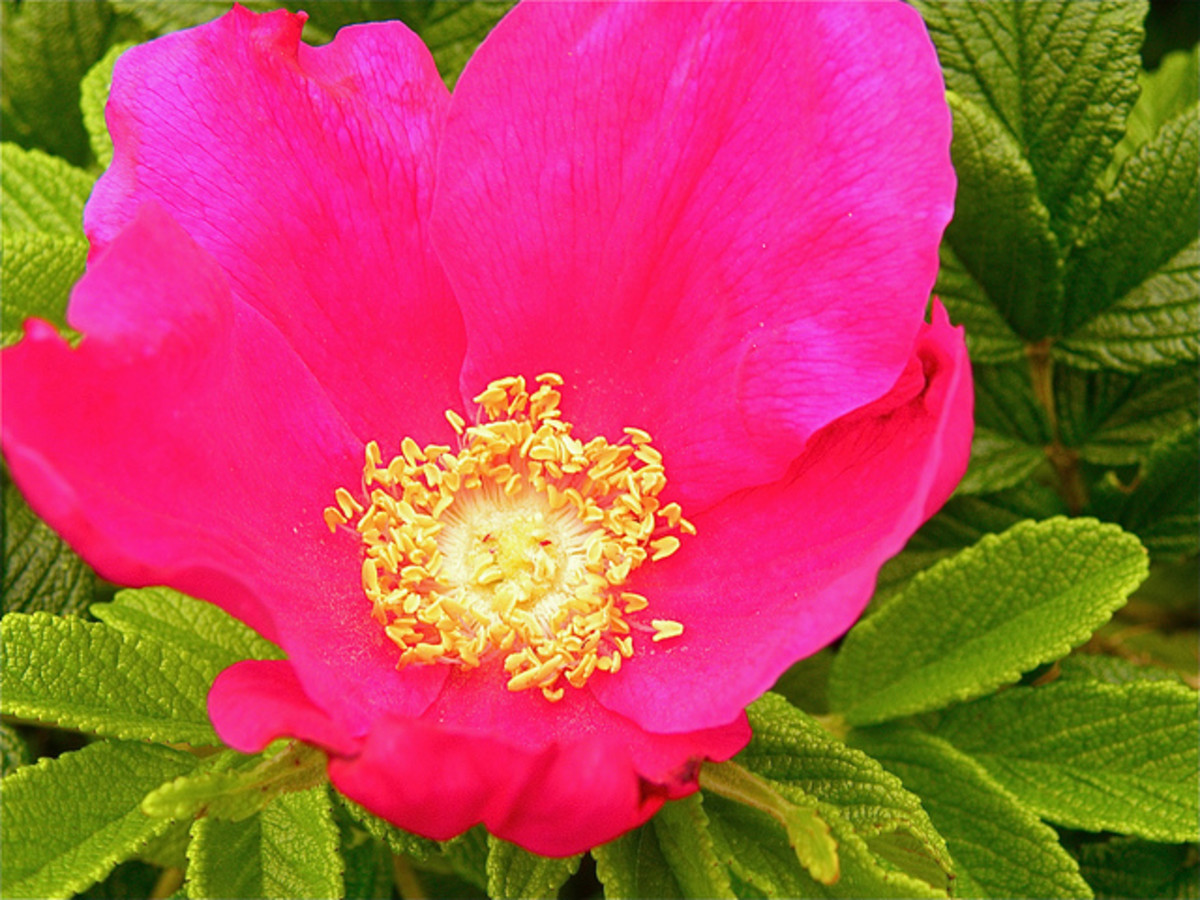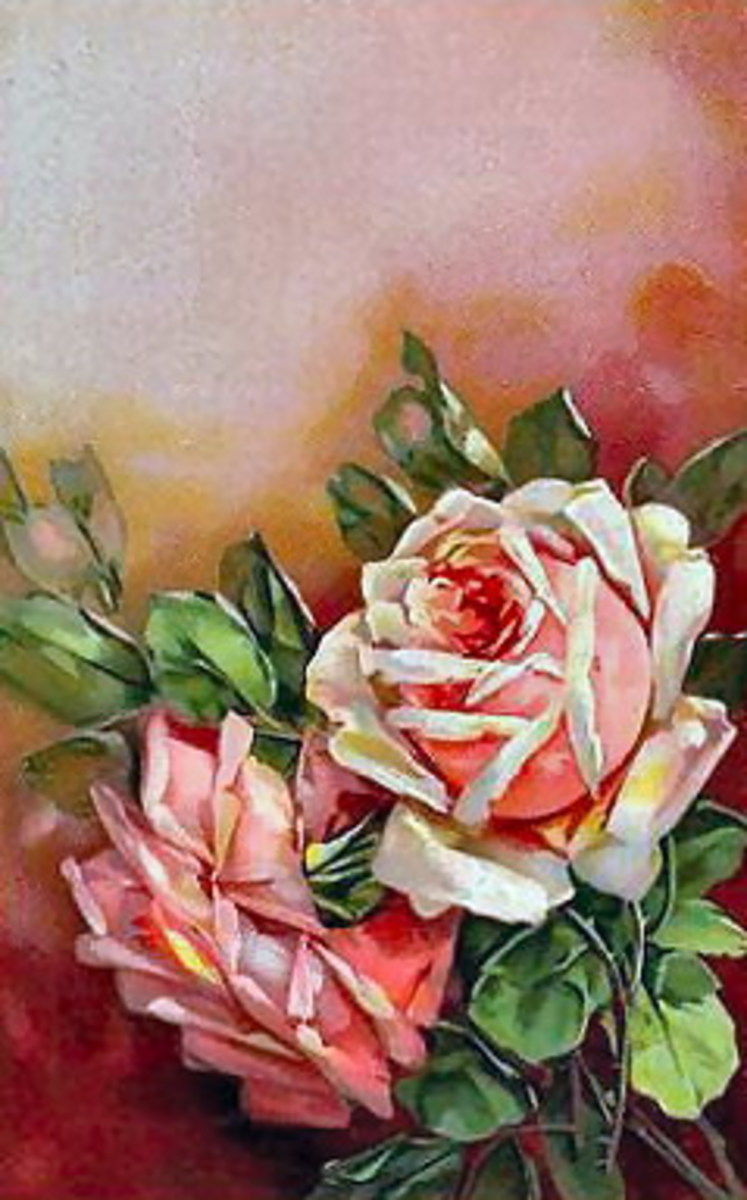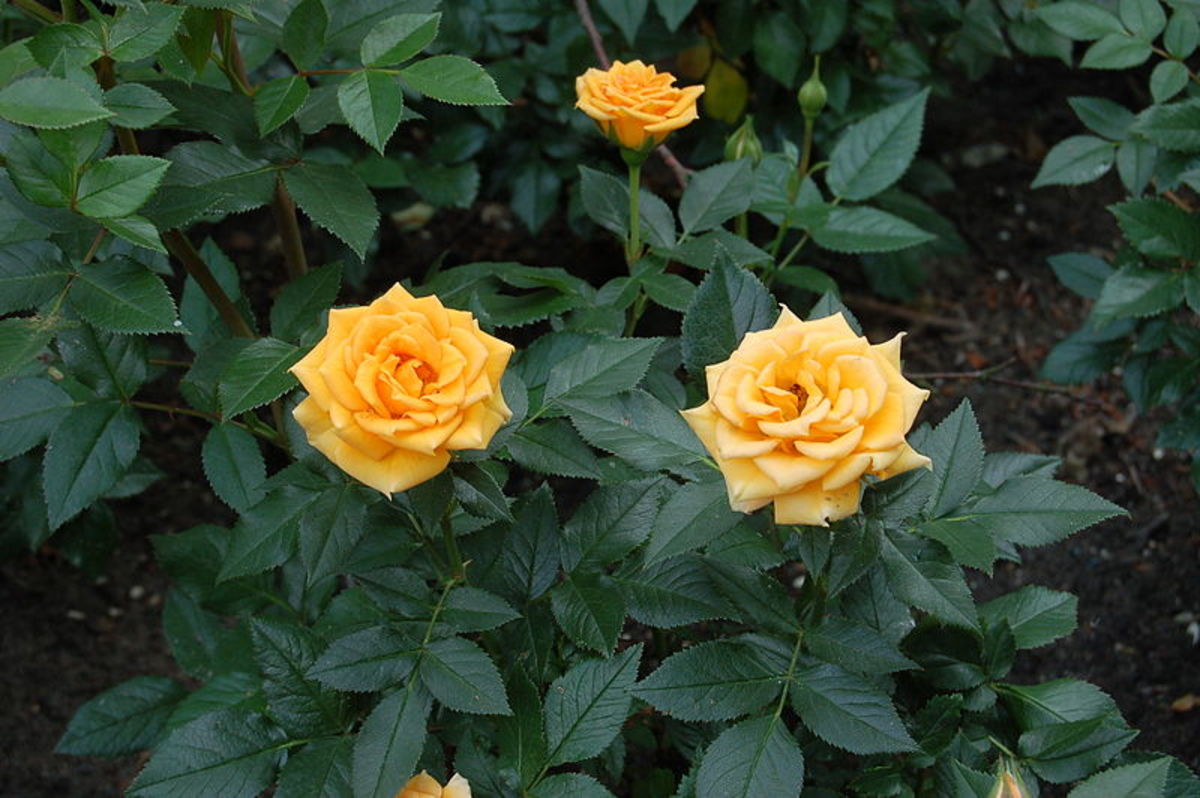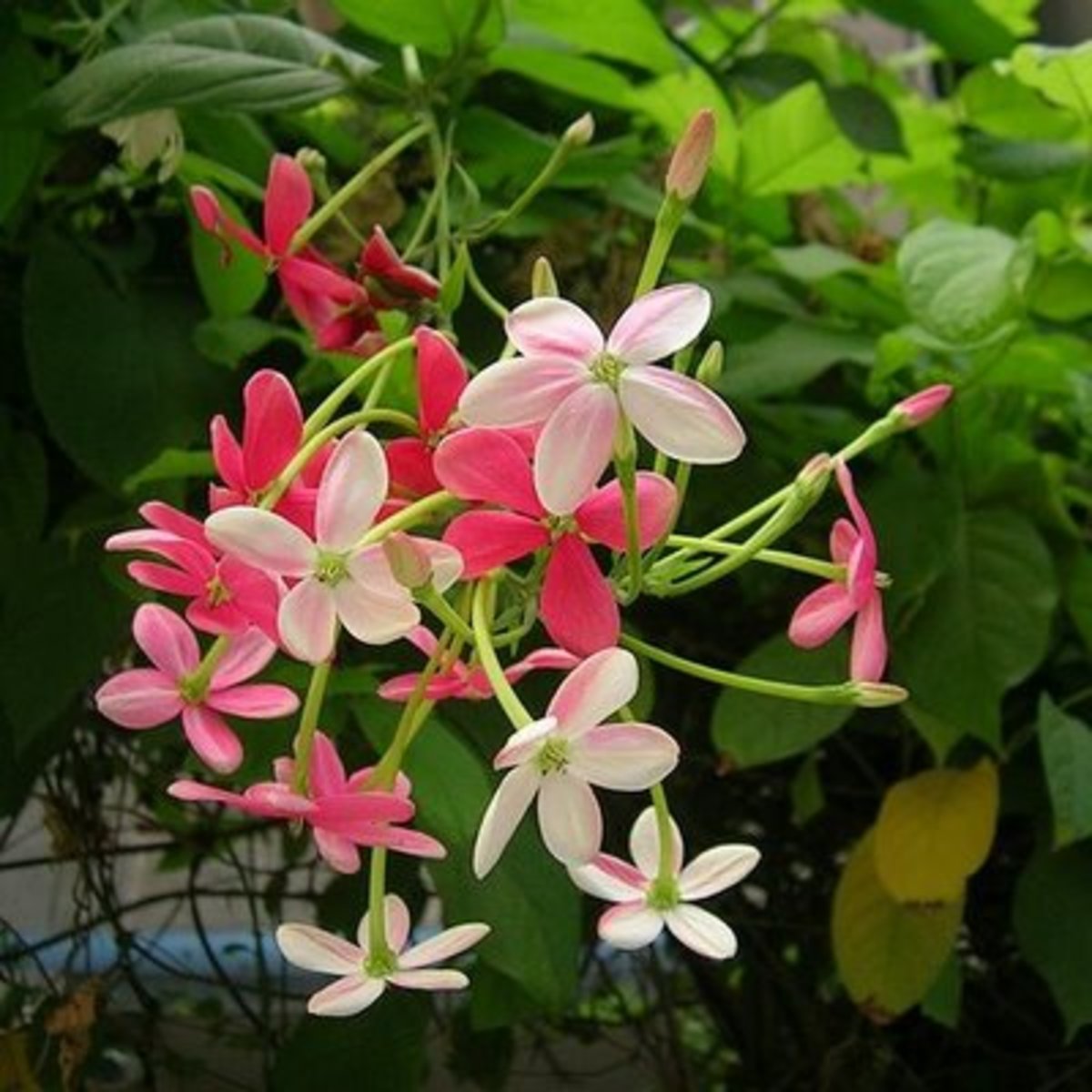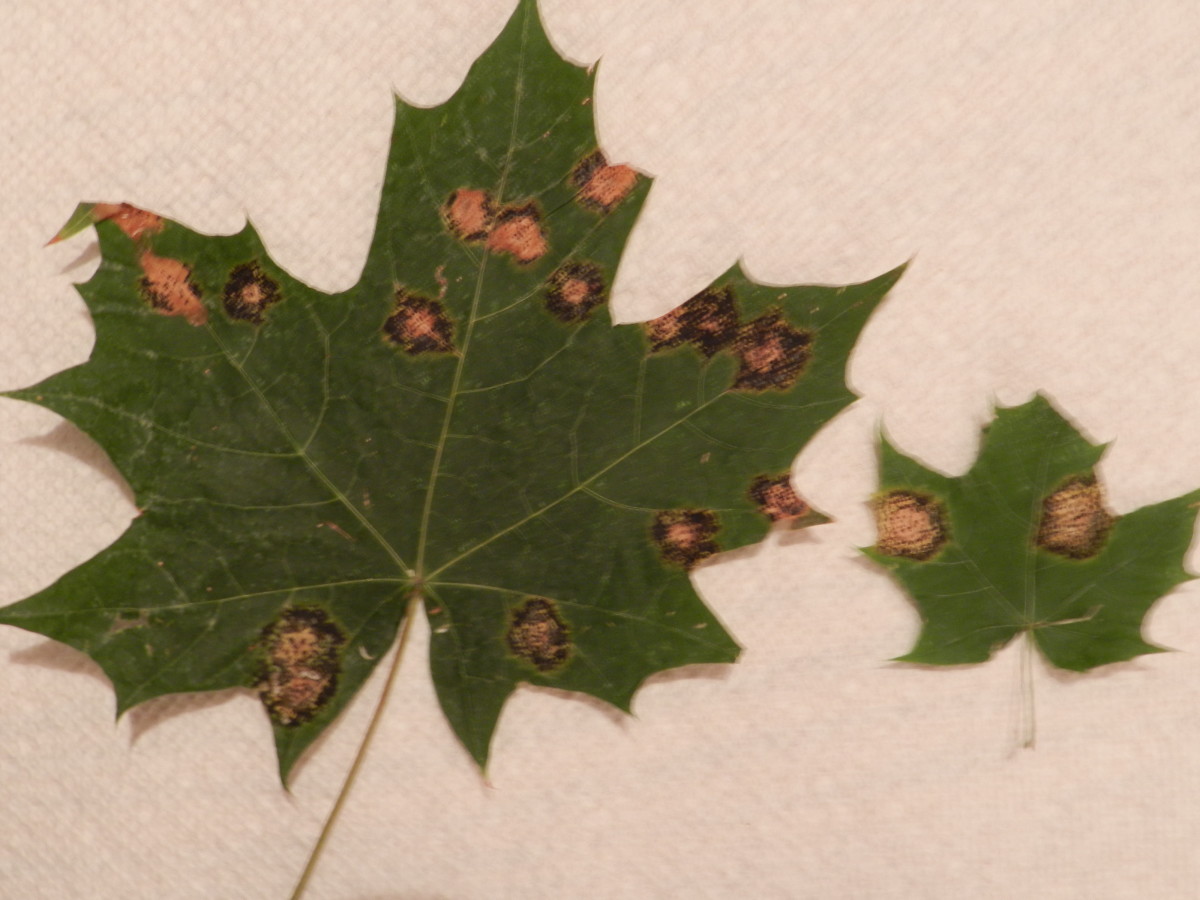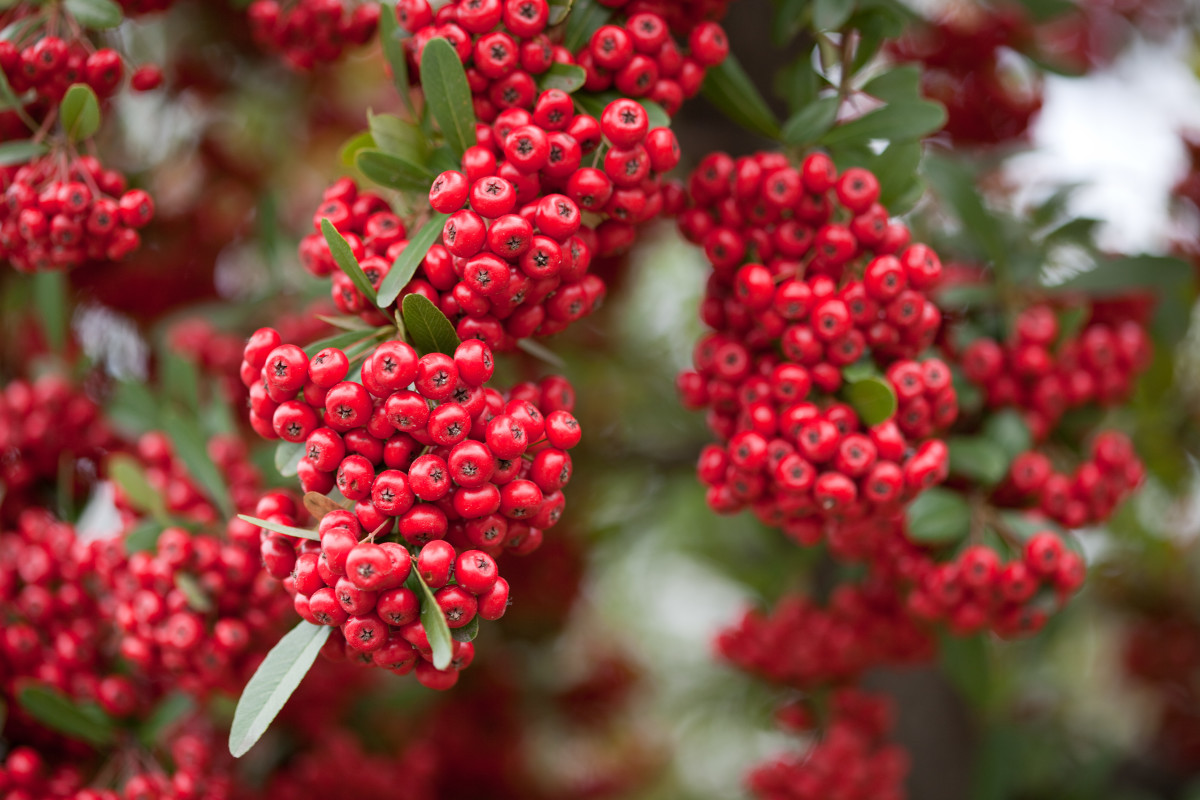Modern Roses For the Garden

A Rose by Many Other Names
I can smell roses in the air as I write this, and there are none around me.
In college, a friend of mine had rose trees at her house - her dad had trained bushes into two 6-foot tall trees over a period of 15 years.
These events demonstrates the power of olfactory memory and the scent of roses in a human life. There is even a belief or legend in sectors of the Catholic Church, that a righteous or pure person - perhaps having had a special mission? - will smell of roses in death. Our respected Catholic friends can fill us in further in the comments below. In essence, the rose by any name is powerful, be that name "Friendship", "Love", "Beauty" or any of dozens of others...
The American Rose Society designates four types of Modern Roses. These include the Floribunda Grandiflora, the Hybrid Tea Rose, and the Miniature. Older types of roses are rather larger, often opening into the shape similar to that of ornamental cabbage. In fact, the Cabbage Rose does that exquisitely.
Modern roses take a different shape. They have also been developed from existing roses of various varieties and a range of interesting names.

A Rose Invented in 1939
The Floribunda Rose was “invented’ by crossing a Hybrid Tea Rose with a polyantha in order to produce a blossom that was more restrained and compact, with additional hardiness and strong resistance to disease. The hybrid tea roses have not had that vigorous type of disease resistance.
Since hybrids or crosses are often stronger and more disease resistant in the animal, plant, and human realms - except for the Hybrid Tea Rose, it seems - then a further hybridization was in order.
Jackson and Perkins as a rose rose company in America developed the name floribunda ("abundant flowering" or "lots of flowers") and first entered this class of roses in the 1939 New York World's Fair.
Today, this rose is very popular, re-blooms very well yearly, and may be used in many areas of the landscape, including hedges and borders. They also thrive in containers, as the lovely Fairy Queen to the right.
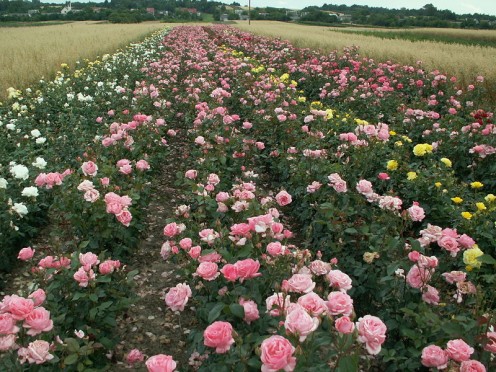
Grandiflora Since 1954
Rose growers became somewhat addicted to hybridization, it seems. They were thinking, “How many roses can we cross and what will they look like? How big can we make them”
After much work, the grandiflora ("big flower") variety emerged from a cross between the trusty hybrid tea rose and previous hybrid, the floribunda. In this iteration, we had 1) a hybrid tea crossed with a polyanthus, and 2) their offspring - a floribunda - crossed again with a hybrid tea. What would be the result?
The first was named Queen Elizabeth and entered in shows in 1954.
A grandiflora bloom usually emerges as flower clusters atop very tall stems, with blossoms bigger than the floribunda variety. They are among the tallest of roses and can stand at the back of a rose display of many varieties and still be seen well.
They can create a wall of roses along a patio or wall. Their blossoms are usually doubled from other roses, but tend to lack fragrance. Beauty with less scent, unfortunately.
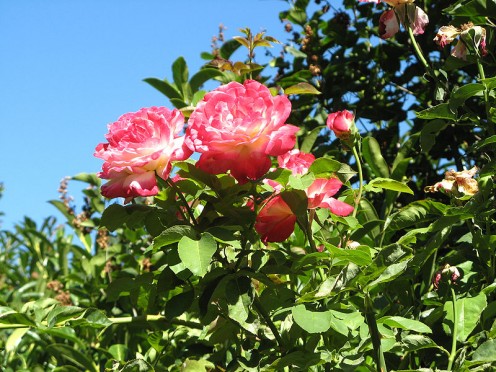
Hybrid Tea Roses Began During the Civil War
These long stemmed roses are the type usually given as gifts to sweethearts.
The hybrid tea rose usually grows into long, pointed buds in every color imaginable, form lightest to darkest, except full black or midnight blue. While a little hybridization is a good think for strength and disease resistance, consistent inbreeding down the line for color variance has produced less disease resistant roses that die while overwintering.
Some inbred roses are hardy, but not very many are robust. This is inbreeding at one of its worse ends. In addition, these 6,000+ varieties of hybrid tea roses are beautiful, but have lost fragrance.
A few of the 6,000+ still have attractive scent quality in additional to beauty, but it's unlikely to find a hybrid tea rose that is all of beautiful, fully fragrant, hardy, and disease resistant. Many varieties are said by some to be more like living plastic flowers, but prettier.

Miniature Roses and WWII
The parent stock plant of all miniatures is a dwarf Chinese Rose named Rouletii.
China roses being very popular among Chinese gardeners. The idea of miniatures emerged in the US at the end of World War Two. While beautiful, most of these miniatures have no scent.
Miniatures are actual roses with miniature canes, foliage, and flowers. The plant grows to a height of from 6 inches to 3 feet, but most are one or one-and-a-half feet tall.
Miniatures need the same care required by other rose varieties, but seem overall to be less stringent in pruning needs than the hybrid tea roses. They also bloom all year.
New miniature roses are developed annually, to add to the already wide palette of colors and fragrances available.
Place miniature roses bushes in pots in a bright sunny south window indoors, or use them in containers on the patio or in the ground along patio sides and and in other landscaping areas.
Miniature roses can also be trained in the style of Bonsai.
The American Rose Society
P.O. Box 30000
Shreveport, Louisiana 71130
© 2008 Patty Inglish MS MPH

